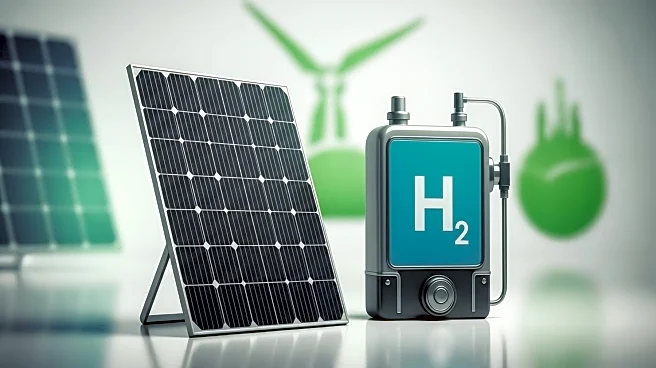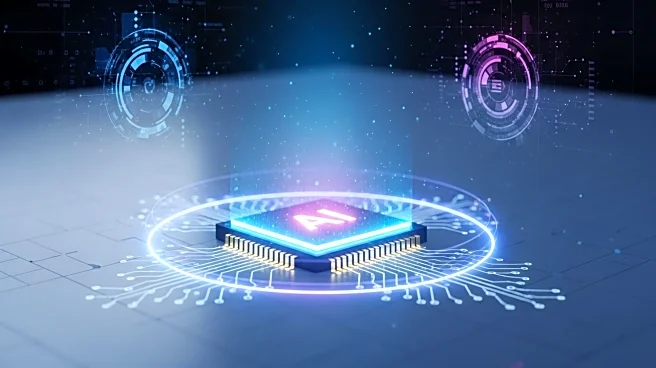What's Happening?
A team of researchers, including Wenjuan Wei, Xiaopeng Zheng, and Hui Huang, have developed all-conjugated block copolymers that serve as dual-function interfacial modifiers for inverted perovskite solar cells (PSCs). These copolymers improve charge extraction and long-term stability by passivating perovskite surface defects and interacting with the electron-transport layer. The polymers, synthesized using Grignard metathesis polymerization, are applied at the perovskite/C60 interface, enhancing the electronic pathways and stability of the solar cells.
Why It's Important?
The development of these block copolymers is crucial for advancing solar cell technology, particularly in improving the efficiency and durability of perovskite solar cells. By enhancing charge extraction and stability, these materials could lead to more reliable and cost-effective solar energy solutions. This innovation addresses key challenges in solar cell performance, potentially accelerating the adoption of renewable energy technologies and contributing to global efforts to reduce carbon emissions.
What's Next?
Further research and development are expected to optimize these block copolymers for commercial applications. The focus will likely be on scaling up production and integrating these materials into existing solar cell manufacturing processes. Researchers may also explore additional applications for these copolymers in other types of solar cells or electronic devices, broadening their impact on the renewable energy sector.
Beyond the Headlines
This advancement in solar cell technology highlights the ongoing efforts to improve renewable energy sources and reduce dependency on fossil fuels. The use of innovative materials like block copolymers reflects the interdisciplinary nature of modern scientific research, combining chemistry, materials science, and engineering to address global energy challenges.












